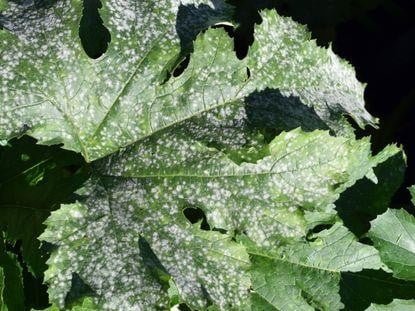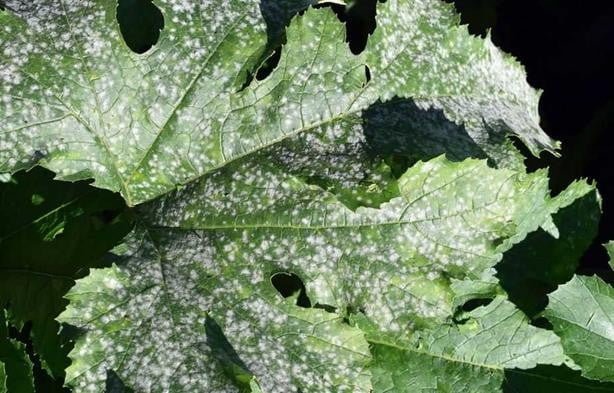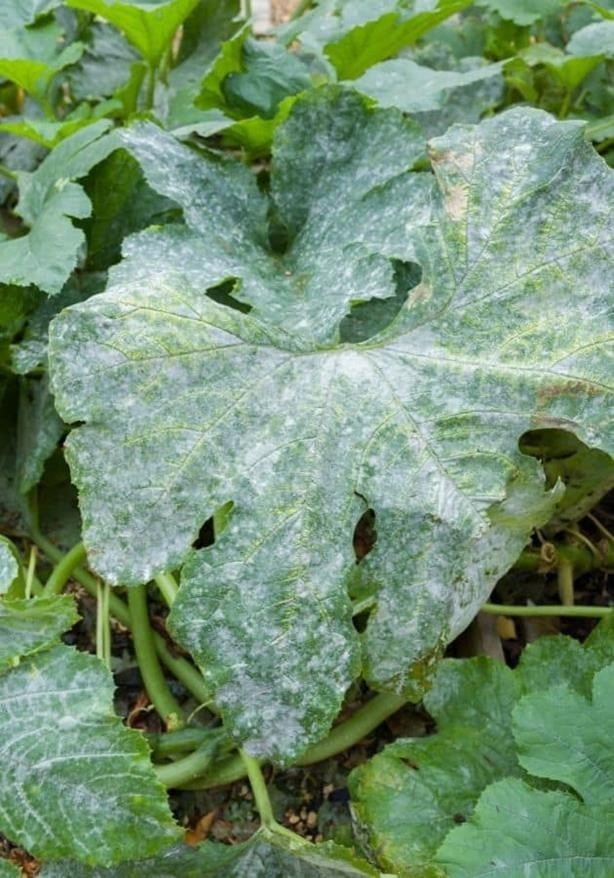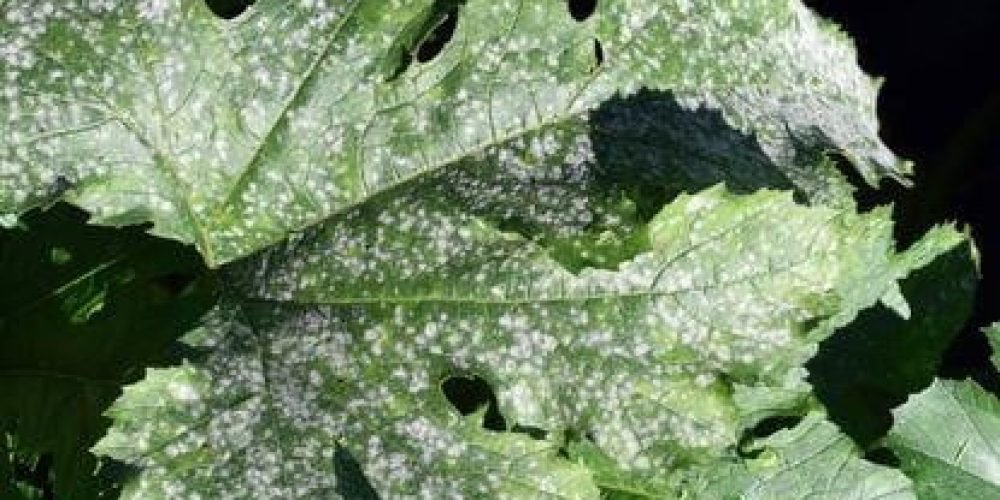English name: Powdery Mildew
The scientific name: Podosphaera xanthii, Erysiphe cichoracearum
The type of disease: Fungal disease Family: Erysiphaceae



Symptoms
Powdery mildew initially appears as small, white, powdery spots on the upper surfaces of leaves. As the disease progresses, the spots enlarge and cover the upper leaf surface with a thick, powdery white layer. Affected leaves may become distorted, yellow or turn brown, dry out, and eventually fall. The fungus can also infect stems and fruits, causing cracks and scars.
the reasons
Powdery mildew is caused by two related fungi, Podosphaera xanthii and Erysiphe cichoracearum. This fungus grows in warm, dry conditions with high humidity.
Propagation conditions
Powdery mildew spreads quickly in warm, humid environments at temperatures between 20 and 27 degrees Celsius. The fungus produces many spores that can be spread by wind, rain, insects, and human activity.
Disease cycle: Powdery mildew fungi ferment in the form of septic mycelia or cleistothecia (reproductive bodies) on plant residues or in the soil. In the spring, cleistothechia produce sporangia that begin the disease cycle. These spores germinate and form new colonies on susceptible grasses. The fungus then produces sexual spores (conidia) that spread the disease throughout the growing season.
Losses
Severe powdery mildew infestations can significantly reduce fruit yield and quality, as well as stunt and weaken plant growth, making it more vulnerable to disease and other environmental stresses.
Control strategies
An integrated approach combining cultural, biological and chemical methods is recommended for effective control of powdery mildew. Preventive measures:
- Planting resistant or tolerant varieties.
- Practice crop rotation.
- Avoid crowds.
- Maintain good ventilation.
- Remove and destroy infected plant remains.
Organic/chemical control
- Use fungicides based on sulfur, neem oil, or potassium bicarbonate solutions.
- Use chemical fungicides containing active ingredients such as mycobutanil, trifloxystrobin, or tebuconazole with caution according to label instructions.
the reviewer:
- https://ephytia.inra.fr/es/D/1673
- https://pinchofseeds.com/powdery-mildew-on-plants/
- Cornell University Vegetable MD Online – Cucurbit Powdery Mildew (https://vegetablemdonline.ppath.cornell.edu/NewsArticles/Cuc_Powdery_Mildew.htm)
- https://www.plantemanuels.com/sites/default/files/styles/maxpx800/public/2018-08/powdery_mildew_on_zucchini.jpg?itok=4J7lJQvq
- https://www.gardeningknowhow.com/edible/vegetables/zucchini/zucchini-squash-diseases.htm



